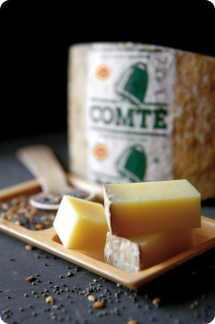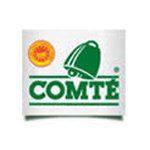The geographical origin
Agricultural practices that respect the land allow Comté to reflect the local soil, flora, microflora and climate where it was made. In 1996, a floristic study of the Comté Terroir Program made it possible to count 576 species of plants on the land of 60 fruitières (cheese dairies) studied, with an average of 130 species/fruitière.
This study revealed that different fruitières produce Comté with distinctly different aromatic profiles according to where they’re located. Comté wheels produced in the same region share certain flavors and aromas while wheels made in different regions have markedly different flavor profiles.
The time of year
The cows’ diet changes with the seasons. Comté produced in winter, when the cows are fed locally harvested hay, will be paler in color than the Comté produced in spring, summer and autumn, when the cows graze on fresh plants that are high in carotene. Also, in the same pasture, the varieties of plants change from one month to the next. The cows’ diet is thus constantly changing, and this diversity has an effect on the color and taste of the cheese throughout the year.
The stages of production
The quality of the milk is directly correlated to the character of the cheese, and thus dairy farmers must handle the milk in such a way as to preserve quality and foster the rich lactic microflora, which give Comté its specific flavors. Cheesemakers and affineurs also influence the transformation of the milk and the way that the Comté wheels ripen. Cheesemakers adapt their techniques to the milk that they receive, and the affineur chooses the cellars and directs the aging process for each wheel to maximize its potential.
The length of time spent aging
The taste and texture of Comté changes as it ages. A young Comté generally has aromas of fresh butter, dried apricots and soft caramel, whereas a long-matured Comté will be more fruity, spicy and nutty.


 The Wheel of Aromas
The Wheel of Aromas





